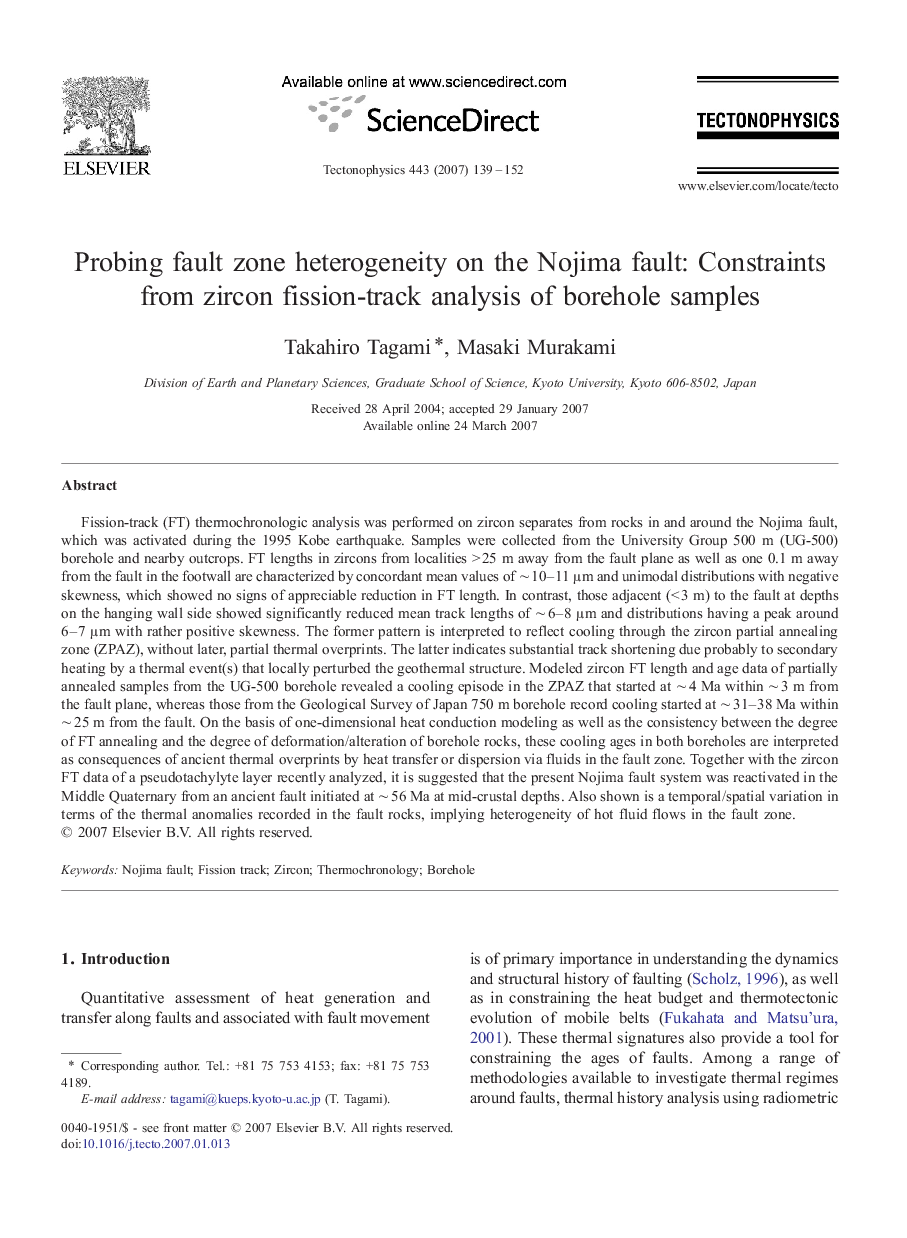| Article ID | Journal | Published Year | Pages | File Type |
|---|---|---|---|---|
| 4694783 | Tectonophysics | 2007 | 14 Pages |
Fission-track (FT) thermochronologic analysis was performed on zircon separates from rocks in and around the Nojima fault, which was activated during the 1995 Kobe earthquake. Samples were collected from the University Group 500 m (UG-500) borehole and nearby outcrops. FT lengths in zircons from localities > 25 m away from the fault plane as well as one 0.1 m away from the fault in the footwall are characterized by concordant mean values of ∼ 10–11 μm and unimodal distributions with negative skewness, which showed no signs of appreciable reduction in FT length. In contrast, those adjacent (< 3 m) to the fault at depths on the hanging wall side showed significantly reduced mean track lengths of ∼ 6–8 μm and distributions having a peak around 6–7 μm with rather positive skewness. The former pattern is interpreted to reflect cooling through the zircon partial annealing zone (ZPAZ), without later, partial thermal overprints. The latter indicates substantial track shortening due probably to secondary heating by a thermal event(s) that locally perturbed the geothermal structure. Modeled zircon FT length and age data of partially annealed samples from the UG-500 borehole revealed a cooling episode in the ZPAZ that started at ∼ 4 Ma within ∼ 3 m from the fault plane, whereas those from the Geological Survey of Japan 750 m borehole record cooling started at ∼ 31–38 Ma within ∼ 25 m from the fault. On the basis of one-dimensional heat conduction modeling as well as the consistency between the degree of FT annealing and the degree of deformation/alteration of borehole rocks, these cooling ages in both boreholes are interpreted as consequences of ancient thermal overprints by heat transfer or dispersion via fluids in the fault zone. Together with the zircon FT data of a pseudotachylyte layer recently analyzed, it is suggested that the present Nojima fault system was reactivated in the Middle Quaternary from an ancient fault initiated at ∼ 56 Ma at mid-crustal depths. Also shown is a temporal/spatial variation in terms of the thermal anomalies recorded in the fault rocks, implying heterogeneity of hot fluid flows in the fault zone.
